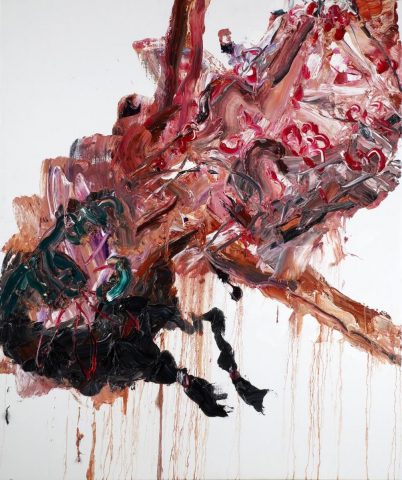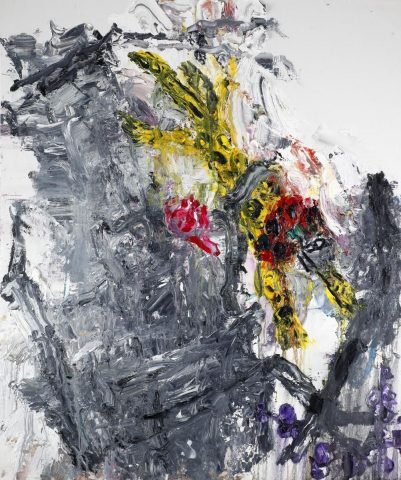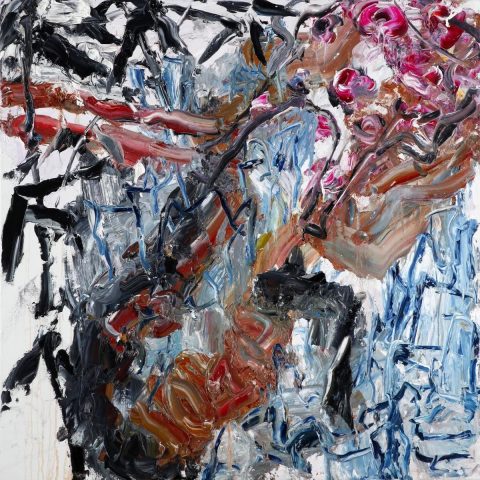
Chen Ping
Biography
TIME, SPACE AND EXISTENCE – Chen Ping
I exemplify a fusion of three elements in my works. My works are a product of existing between two different cultures and societies they seek to explore and return to the beginnings of culture and re-examine the relationship between people, their environment, and animals.
TIME
Over time my works have changed as the environment has changed around me. My life experiences have also evolved over time as does culture in both China and Tasmania. Chinese culture has become less defined and more blended.
Moving from China to Tasmania has cultivated my perception of changes in landscapes, people, and animals.
My studio is so close to mountains in Hobart, Tasmania and I start my day taking an hour-long walk up to the mountain before returning to paint in the studio. Most of the time, I am alone in the mountains. I have experienced the untouched landscapes such as old growth forests, mountain lakes, rivers and snow mountains; wild animals such as Tasmanian devils, wombats and echidnas; and the ever changing weather. A rainbow is visible nearly every day in the sky and quite often different colour auroras. I look into the relationships between human nature, animals, and landscapes, which make my mind wander to ancient Chinese mythology. I always imagine how the primitive ancient Chinese would react to the same raw beauties of Tasmania, which could have existed many thousands years ago. In fact, a geography book, “Shan Hai Chin”, written 2 to 3 thousands years ago, describes the world as a great wonder in where there were lots unseen mountains, oceans and animals. These picturesque scenes hold special meaning and are unique to my perspective as someone who has left a destructive modern China and moved to a pristine and beautiful Tasmania. Over time in China the landscapes have changed from nature to material. This has affected the Chinese persona and their connection to the spiritual past. The spirit of China has been replaced by materials.
Reflecting between the times of ancient and current, my emotion explodes in my works, of which the elements of the paintings and methodology are unique and organic to time period and place where they were created. They cannot be reproduced.
SPACE
China is an ancient place that has been polluted and broken down over time while Tasmania has retained is natural state allowing people to connect with their spirituality.
Within my paintings the figures are emerging and disappearing at the same time. The animals, people and landscapes transcend into one another much like they do in reality, this is the way I see the world. The movement, disappearance and blending of shapes and forms relate to the loss of identity of people living within China. In ancient China, people believed their ancestors were from different kinds of animals. Animals were considered to be spiritual guides and people were intertwined and dependent upon them. In this wonderful world, beautiful spirits floated between physical and metaphysical spaces. This is exemplified by the organic and blended nature of the forms in the works. The work cannot exist by singling out a single element because all parts are transcendent of one another. Although the use of colours sometimes reflects nature, there are attempts to invent accidental colours in my work to lead viewers into a different reality – a magical one.
EXISTENCE
The motives behind my works are creation without reason and relate to nature, mythology, and society. Existence and creation are both bound by chance and determined by choices made in the moment, which change the future and past.
I have done sketches in the mountains; I have researched human figures, plants and animals both in real life and from books. Additionally I have been studying ancient Chinese arts, artefacts and sculptures. As a result, I can freely create different colours and patterns of animals; even mask-like animal faces in my paintings. The animals in my work are not specific they are trans-geographical and timeless. The landscape elements, such as flowers, rainbows, clouds and light are eternal. These are reminders that the surviving animals in Tasmania have been struggling against their extinction in modern times and that Tasmania’s efforts and environmental protection movements are necessary to preserve one of the world most natural heritages.
However, the choices made by Chinese society, my home country, have been destructive. They have created a breakdown in culture and I am worried about how people will survive without their identity. China is currently experiencing destruction, depression, suppression, and political upheaval. The killing of endangered animals and the polluted environment have created a disconnect between people, animals, landscapes and spirituality. The ancient mind of China has been destroyed along with the landscapes of the timeworn country. This body of work is evidence that ideologies can still live on within individuals who choose to embrace the relationships between people, landscapes, and animals as an important part of their personal journey. People should be able to look to the natural environment to find meaning and an understanding of themselves.
Chen Ping was born in 1962 in China and moved to Tasmania in 1994.
He studied art at Sub-High School, Guangzhou Academy of Fine Art, Guangzhou, and was awarded a Certificate in 1981.
He undertook further studies at the Guangzhou Academy of Fine Art for a BFA (Education) in 1985. Chen completed his formal studies at the School of Art, University of Tasmania, Hobart, and received a BFA (Painting) degree in 1997.
Showing all 3 artworks



